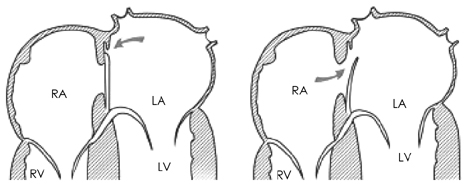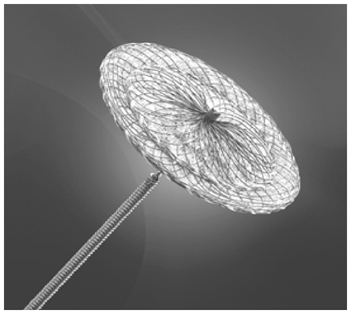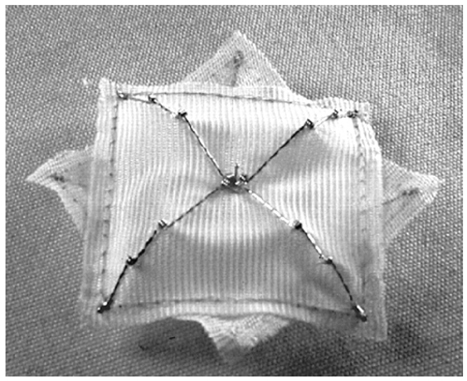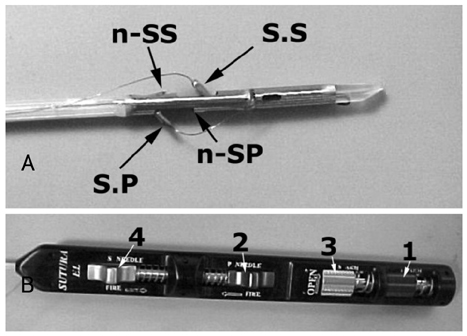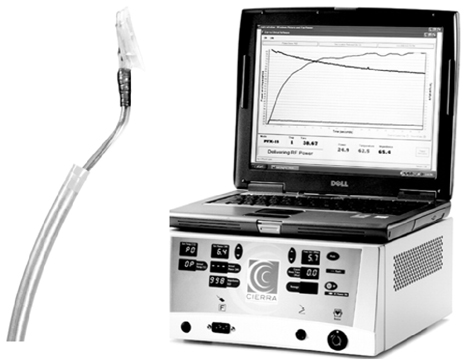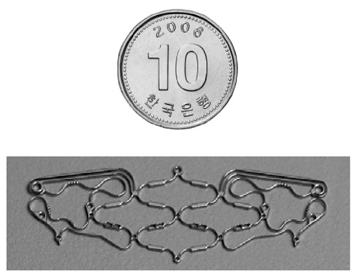Korean Circ J.
2008 Dec;38(12):631-637. 10.4070/kcj.2008.38.12.631.
Patent Foramen Ovale and Cryptogenic Stroke
- Affiliations
-
- 1Division of Cardiology, Department of Internal Medicine, Pusan National University Hospital, Busan, Korea. ptca82@hotmail.com
- KMID: 2225695
- DOI: http://doi.org/10.4070/kcj.2008.38.12.631
Abstract
- Patent foramen ovales (PFOs) are common congenital cardiac defects that have been associated with the occurrence of stroke, especially with cryptogenic stroke, or those of undefined cause, accounting for up to 40% of all ischemic strokes. A number of studies have demonstrated the association of larger PFOs with increased shunting in patients with cryptogenic strokes. Medical treatment is often considered inadequate, and percutaneous closure offers an attractive, albeit controversial, alternative in stroke patients with PFOs. Although it is plausible that percutaneous PFO closure will reduce the rate of recurrent stroke in these patients, no prospective, randomized trials examining the efficacy of closure devices in this setting have been completed. This paper reviews the known relationship between PFOs and cryptogenic strokes and discusses current therapeutic options, including percutaneous closure.
Keyword
MeSH Terms
Figure
Cited by 1 articles
-
Post-Operative Multiple Thrombosis Associated with Patent Foramen Ovale: Embolic Stroke, Right Atrial Thrombi, Pulmonary Embolism and Deep Vein Thrombosis
Sun-Young Cho, Ho-Joong Youn, Mi-Youn Park, Byung-Ju Shim, Seung-Jae Lee, Jeong-Ho Kim, Jung-Ku Park, Chang-Yul Oh, So-Hyun Ahn, Woo-Hyun Cho
J Cardiovasc Ultrasound. 2015;23(3):177-180. doi: 10.4250/jcu.2015.23.3.177.
Reference
-
1. Hausmann D, Mugge A, Becht I, Daniel WG. Diagnosis of patent foramen ovale by transesophageal echocardiography and association with cerebral and peripheral emboli events. Am J Cardiol. 1992. 70:668–672.2. Ranoux D, Cohen A, Cabanes L, Amarenco P, Bousser MG, Mas JL. Patent foramen ovale: is stroke due to paradoxical embolism? Stroke. 1993. 24:31–34.3. Schwerzmann M, Seiler C, Lipp E, et al. Relation between directly detected patent foramen ovale and ischemic brain lesions in sport divers. Ann Intern Med. 2001. 134:21–24.4. Del Sette M, Angeli S, Leandri M, et al. Migraine with aura and right-to-left shunt on transcranial Doppler: a case-control study. Cerebrovasc Dis. 1998. 8:327–330.5. Hara H, Virmani R, Ladich E, et al. Patent foramen ovale: current pathology, pathophysiology, and clinical status. J Am Coll Cardiol. 2005. 46:1768–1776.6. Drighil A, El Mosalami H, Elbadaoui N, Chraibi S, Bennis A. Patent foramen ovale: a new disease? Int J Cardiol. 2007. 122:1–9.7. Silver MD, Dorsey JS. Aneurysms of the septum primum in adults. Arch Pathol Lab Med. 1978. 102:62–65.8. Agmon Y, Khandheria BK, Meissner I, et al. Frequency of atrial septal aneurysms in patients with cerebral ischemic events. Circulation. 1999. 99:1942–1944.9. Mugge A, Daniel WG, Angermann C, et al. Atrial septal aneurysm in adult patients: a multicenter study using transthoracic and transesophageal echocardiography. Circulation. 1995. 91:2785–2792.10. Schulz UG, Rothwell PM. Differences in vascular risk factors between etiological subtypes of ischemic stroke: importance of population-based studies. Stroke. 2003. 34:2050–2059.11. Meissner I, Khandheria BK, Heit JA, et al. Patent foramen ovale: innocent or guilty?: evidence from a prospective population-based study. J Am Coll Cardiol. 2006. 47:440–445.12. Aberts GW, Comess KA, DeRook FA, et al. Transesophageal echocardiographic findings in stroke subtypes. Stroke. 1994. 25:23–28.13. Jeanrenaud X, Bogousslavsky J, Payot M, Regli F, Kappenberger L. Patent foramen ovale and cerebral infarct in young patients (French). Schweiz Med Wochenshr. 1990. 120:823–829.14. Oh BH, Park SW, Choi YJ, et al. Prevalence of the patent foramen ovale in young patients with ischemic cerebrovascular disease: transesophageal contrast echocardiographic study. Korean Circ J. 1993. 23:217–222.15. Overall JR, Bone I, Lees KR. Interatrial septal abnormalities and storke: a meta analysis of case control studies. Neurology. 2000. 55:1172–1179.16. Berthet K, Lavergne T, Cohen A, et al. Significant association of atrial vulnerability with atrial septal abnormalities in young patients with ischemic stroke of unknown cause. Stroke. 2000. 31:398–403.17. Caes FL, van Belleghem YV, Missoult LH, Coenye KE, van Nooten GJ. Surgical treatment of impending paradoxical embolism through patent foramen ovale. Ann Thorac Surg. 1995. 59:1559–1561.18. Chaturvedi S. Coagulation abnormalities in adult with cryptogenic stroke and patent foramen oval. J Neurol Sci. 1998. 160:158–160.19. Cabanes L, Mas JL, Cohen A, et al. Atrial septal aneurysm and patent foramen ovale as risk factors for cryptogenic stroke in patients less than 55 years of age. Stroke. 1993. 24:1865–1873.20. Mattioli AV, Aquilina M, Oldani A, Longhini C, Mattioli G. Atrial septal aneurysm as a cardioembolic source in adult patients with stroke and normal carotid arteries: a multicentre study. Eur Heart J. 2001. 22:261–268.21. Pearson AC, Nagelhout D, Castello R, Gomez CR, Labovitz AJ. Atrial septal aneurysm and stroke: a transesophageal echocardiographic study. J Am Coll Cardiol. 1991. 18:1223–1229.22. Webster MW, Chancellor AM, Smith HJ, et al. Patent foramen ovale in young stroke patients. Lancet. 1988. 2:11–12.23. Lechat P, Mas JL, Lascault G, et al. Prevalence of patent foramen ovale in patients with stroke. N Engl J Med. 1988. 318:1148–1152.24. Di Tullio M, Sacco RL, Gopal A, Mohr JP, Homma S. Patent foramen ovale as a risk factor for cryptogenic stroke. Ann Intern Med. 1992. 117:461–465.25. Handke M, Harloff A, Olschewski M, Hetzel A, Geibel A. Patent foramen ovale and cryptogenic stroke in older patients. N Engl J Med. 2007. 357:2262–2268.26. Homma S, Sacco RL, Di Tullio MR, et al. Effect of medical treatment in stroke patients with patent foramen ovale. Circulation. 2002. 105:2625–2631.27. Di Tullio MR, Sacco RL, Sciacca RR, Jin Z, Homma S. Patent foramen ovale and the risk of ischemic stroke in a multiethnic population. J Am Coll Cardiol. 2007. 49:797–802.28. Albers GW, Amarenco P, Easton JD, Sacco RL, Teal P. Antithrombotic and thrombolytic therapy for ischemic stroke: the 7th ACCP Conference on Antithrombotic and Thrombolytic Therapy. Chest. 2004. 126:3 Suppl. 483S–512S.29. Mas JL, Arquizan C, lamy C, et al. Recurrent cerebrovascular events associated with patent foramen ovale, atrial septal aneurysm, or both. N Engl J Med. 2001. 345:1740–1746.30. Sacco RL, Adams R, Albers G, et al. Guidelines for prevention of stroke in patients with ischemic stroke or transient ischemic attack: a statement for healthcare professionals from the American Heart Association/American Stroke Association Council on Stroke: co-sponsored by the Council on Cardiovascular Radiology and Intervention: the American Academy of Neurology affirms the value of this guideline. Stroke. 2006. 37:577–617.31. Messe SR, Silverman IE, Kizer JR, et al. Practice parameter: recurrent stroke with patent foramen ovale and atrial septal aneurysm. Neurology. 2004. 62:1042–1050.32. Homma S, Di Tullio MR, Sacco RL, Sciacca RR, Smith C, Mohr JP. Surgical closure of patent foramen ovale in cryptogenic stroke patients. Stroke. 1997. 28:2376–2381.33. Dearani JA, Ugurlu BS, Danielson GK, et al. Surgical patent foramen ovale closure for prevention of paradoxical embolism-related cerebrovascular ischemic events. Circulation. 1999. 100:19 suppl. II171–II175.34. Devuyst G, Bogousslavsky J, Ruchat P, et al. Prognosis after stroke followed by surgical closure of patent foramen ovale: a prospective follow-up study with brain MRI and simultaneous transesophageal and transcranial Doppler ultrasound. Neurology. 1996. 47:1162–1166.35. Ruchat P, Bogousslavsky J, Hurni M, Fischer AP, Jeanrenaud X, von Segesser LK. Systematic surgical closure of patent foramen ovale in selected patients with cerebrovascular events due to paradoxical embolism: early results of a preliminary study. Eur J Cardiothorac Surg. 1997. 11:824–827.36. Windecker S, Wahl A, Nedeltchev K, et al. Comparison of medical treatment with percutaneous closure of patent foramen ovale in patients with cryptogenic stroke. J Am Coll Cardiol. 2004. 44:750–758.37. Khairy P, O'Donnell CP, Landzberg MJ. Transcatheter closure versus medical therapy of patent foramen ovale and presumed paradoxical thromboemboli: a systematic review. Ann Intern Med. 2003. 139:753–760.38. Wu LA, Malouf JF, Dearani JA, et al. Patent foramen ovale in cryptogenic stroke: current understanding and management options. Arch Intern Med. 2004. 164:950–956.39. Slottow TL, Steinberg DH, Waksman R. Overview of the 2007 Food and Drug Administration Circulatory System Devices Panel meeting on patent foramen ovale closure devices. Circulation. 2007. 116:677–682.40. Meier B. Closure of patent foramen ovale: technique, pitfalls, complications, and follow up. Heart. 2005. 91:444–448.41. Trepels T, Zeplin H, Sievert H, et al. Cardiac perforation following transcatheter PFO closure. Catheter Cardiovasc Interv. 2003. 58:111–113.42. Gupta A, Kapoor G, Dalvi B. Transcatheter closure of atrial septal defects. Expert Rev Cardiovasc Ther. 2004. 2:713–719.43. Anzai H, Child J, Natterson B, et al. Incidence of thrombus formation on the CardioSEAL and the Amplatzer interatrial closure devices. Am J Cardiol. 2004. 93:426–431.44. Majunke N, Sievert H. ASD/PFO devices: what is in the pipeline? J Interv Cardiol. 2007. 20:517–523.
- Full Text Links
- Actions
-
Cited
- CITED
-
- Close
- Share
- Similar articles
-
- A Case of Bilateral Posterior Cerebral Artery Infarction with Patent Foramen Ovale
- A Case of Paradoxical Renal Embolism through Patent Foramen Ovale
- Transcatheter Closure of Patent Foramen Ovale in a Stroke Patient under the Guidance of Transesophageal Echocardiography
- Multidetector Row CT Detection of a Patent Foramen Ovale Causing Neurologic Deficits in an Adolescent: A Case Report
- CT Diagnosis of Paradoxical Embolism via a Patent Foramen Ovale in a Patient with a Pulmonary Embolism and Prominent Eustachian Valve

